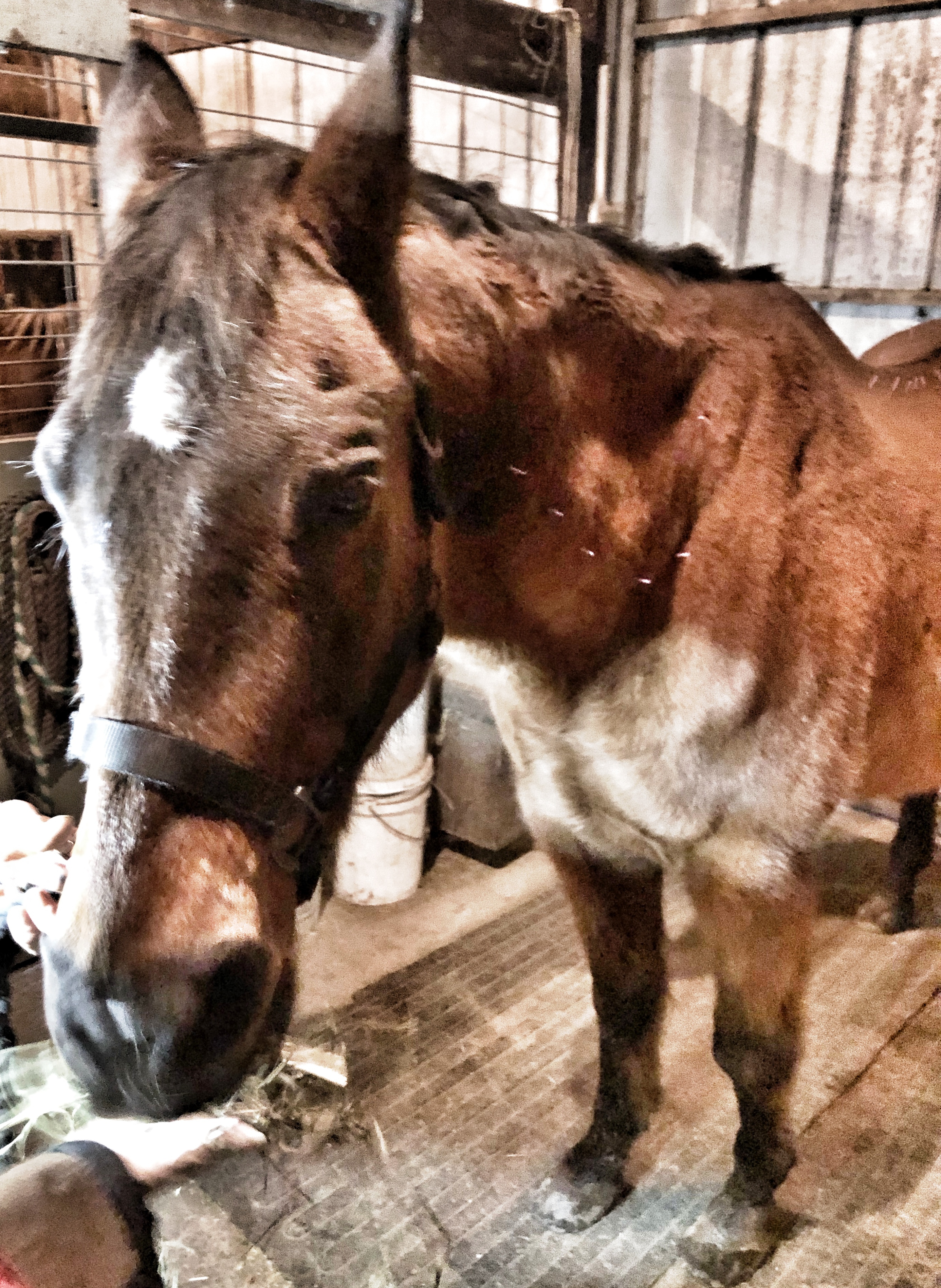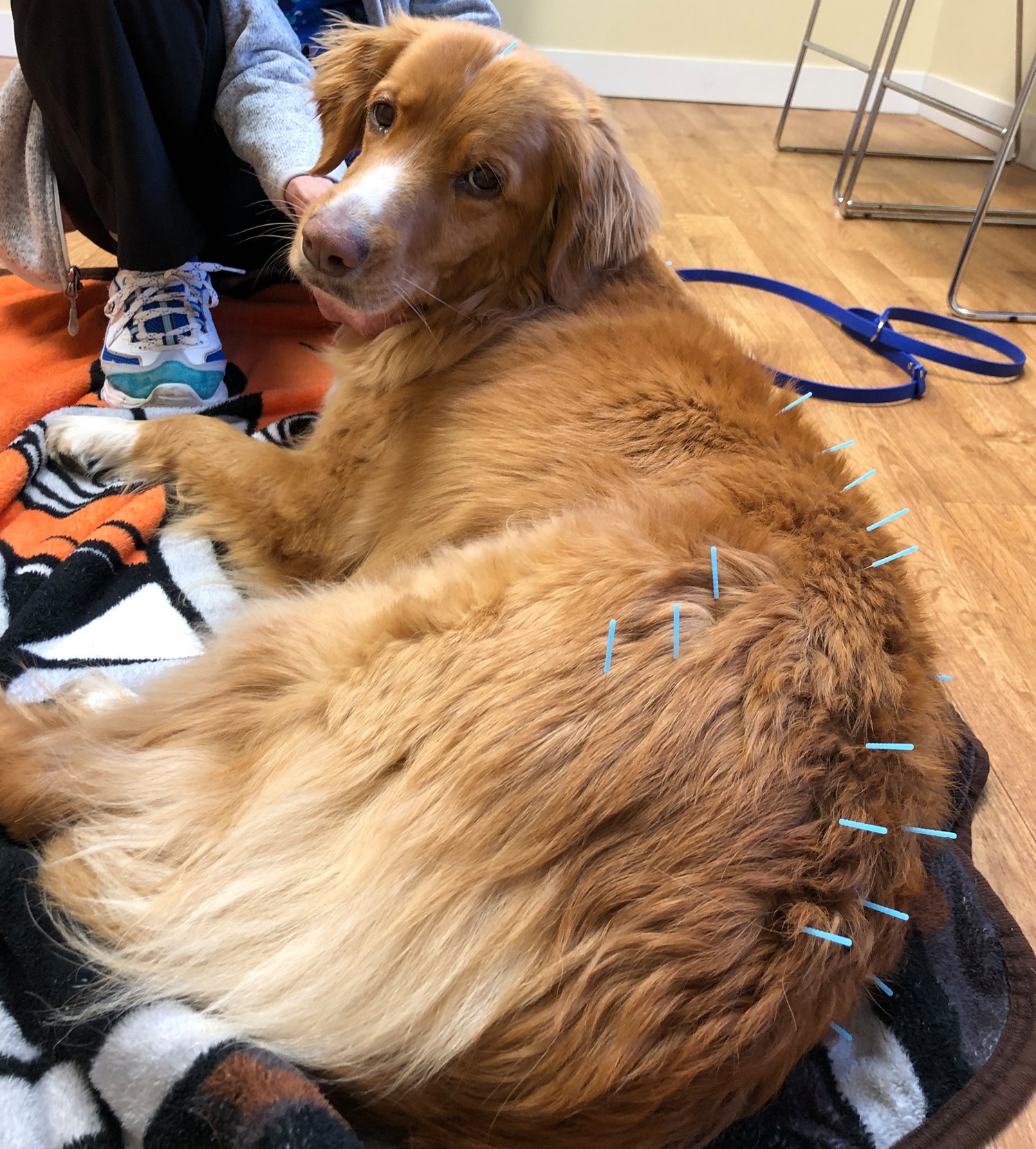What is acupuncture?
Acupuncture is the process of inserting slim sterile needles through the skin at specific locations (“acupuncture points”) throughout the body to create physiological changes. This form of medicine pre-dates modern medical science and was developed using a belief based system of proposed energy channels (meridians) that allowed energy to flow through the body. The body of scientific research explaining the mechanisms of how acupuncture leads to physiological changes is rapidly expanding. While the early practitioners of acupuncture did not have a strong concept of biology and anatomy, leading to energy movement belief systems to explain acupuncture, they definitely understood that placing needles in specific points on the body lead to repeatable changes in the body. Today, we are able to explain the mechanisms of acupuncture using science and anatomy.

Size comparison to acupuncture needle (green handle on the far right). The blue hypodermic needle is the typical size used to give vaccines in dogs and cats. Acupuncture needles are tiny!
How does acupuncture work?
Acupuncture works by a process known as neuromodulation. Simply put, the acupuncture needles are placed near key nerves to send electrical signals to the brain and spinal cord, leading the brain to release its own substances and factors to reduce pain, decrease swelling, promote a sense of relaxation, and balance body systems. Additionally, localized effects along with input from the brain and spinal cord will stimulate increased blood flow to targeted organs, muscles, and joints to help reduce pain and swelling.
What is electroacupuncture and why use it?
Electroacupuncture is the process of using a very small electrical current to stimulate the acupuncture needles, enhancing the positive effects of the acupuncture needles. There are many studies in both human and veterinary medicine to support the use of electroacupuncture, particularly with nerve dysfunction and chronic pain.

Dr. Judd's dog, Luke, enjoying his electroacupuncture session.
Is acupuncture painful?
Have YOU had acupuncture and found it to be uncomfortable? This is certainly reported sometimes among human acupuncture patients. The goal of Veterinary Medical Acupuncture is to stimulate nerves without causing pain – our treatments focus on stimulating the skin receptors that respond to pressure (mechanoreceptors) rather than skin receptors that respond to pain (nociceptors). We strive to minimize feelings of discomfort in our patients, and both acupuncture and electroacupuncture are usually well accepted by most veterinary patients. Tasty treats are also provided to help distract needle shy patients. Many animals enjoy their acupuncture treatments and some will even fall asleep during their treatments.
Does acupuncture actually work?
There are many studies in animals that indicate positive physiological changes in animals in response to acupuncture and electroacupuncture. Since animals do not have the capacity to pre-determine if the acupuncture treatment will work or not (placebo effect), any positive results associated with acupuncture can be considered genuine.
How many treatments will my animal need?
The number of treatments will differ, depending on the condition being treated, and the animal itself and how it responds to the needles. In animals with long standing or very severe ailments, treatment may be needed weekly or every other week for the first few sessions, before lengthening the time between treatments. Most patients get by with maintenance treatments every 4-8 weeks. Usually, a change is seen in the patient within the first 2-4 treatments if acupuncture is going to make a meaningful difference in the patient.





